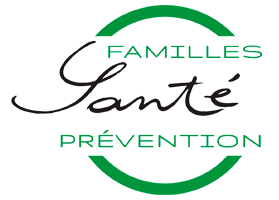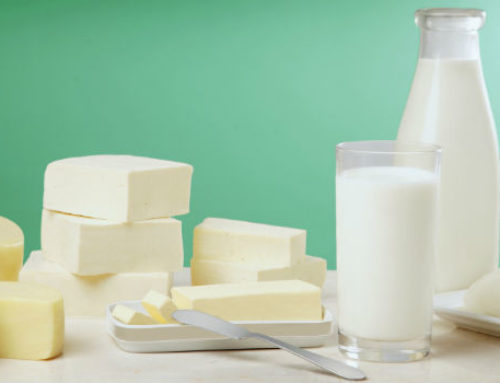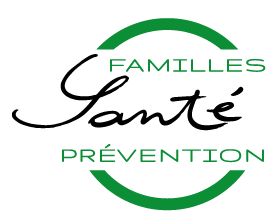Letter No. 5 of Christine Bouguet-Joyeux
Dear friends,
Among all the questions we get, many surround infants’ nutrition. Family do not pass down nutrition and nursing information as much. This kind of support is becoming rare, so we rely on public information more. However, it gets all the more difficult to sort valuable information since we are surrounded by so many ever more compelling new products and solutions. Families and especially mothers, information on children’s nutrition is so troubling you get worried about your children’s health. You ask many questions about allergies, intolerances, on how much we should rely on vegetal milks compared to other types of milks. We felt we had to give you a more global understanding of this topic.
Thank you for your questions that gave Familles Santé Prévention the impulse to treat the topic of breastfeeding and infant nutrition
To provide complete and easily understandable information, I wrote a four part article.
Sections will be published two weeks apart:
1/ The breastfeeding ideal,
2/ Animal milks: from cows, goat, sheep, mare, donkey, buffalo, camel…
3/ Industrially manufactured milks,
4/ Plant and nut milks: almond, hazelnut, chestnut, walnut and other nut milks, rice, quinoa and soy milks
The breastfeeding ideal
More and more young women understand how important breastfeeding is. The World Health Organization recommends breastfeeding exclusively for 6 months, plus one year partial breastfeeding, mornings and evenings.
Latest studies find that in France, approximately 70% of babies are breastfed at birth. After that, breastfed babies are just a bare majority: 50% to 70% of babies are partially or exclusively breastfed at 17 weeks. Only 19% of babies are even partially breastfed at age 6 months. At age one, only 5.3% are. On this topic, the INVS (French institute for health monitoring) draws the same conclusions: “Despite its extension since the 1990s, the amount of time mothers breastfeed does not come close to the PNNS (French program national nutrition santé) recommendations. It is actually further removed from WHO’s recommendations”. [1]
The ideal composition
Manufacturers may try to replicate breastmilk composition but to children, nothing is as good as mother’s milk. It is the first and most durable immune protection, and consequently its best vaccine and best protection as baby grows. Maternal antibodies, molecules (immunoglobulins) and protective cells such as T4 lymphocytes can only be found in mother’s milk (see on website of prof Henri Joyeux’s letters No. 97, “Your breasts talk to you” No.123 “Mother’s milk the best vaccine”, and No.124 “Twelve answers on breastfeeding and vaccines” and his book “ Manger Mieux et Meilleur de 0 à 100 ans ”(“Eat better and tastier from 0 to 100”).
Breastmilk provides the infant with neurotrophic growth factors that are imperative to his anatomic development, and to his functional brain – thus neurological – development. It contains specific carbohydrates and polyunsaturated fatty acids. More specifically, it naturally brings omega 3 fatty acids, which are useful to infant’s brain cell, bone marrow and nervous systems development. Of course, breastmilk reflects his mother’s nutrition. Consequently, she needs to be particularly attentive to the quality of her nutrition. She should be encouraged to eat fresh and preferably organic local and seasonal fruits and vegetables, lettuces, poultry and organic eggs (à la coque or soft boiled, i.e. cooked so as to keep the yolk liquid, because it contains heat-sensitive omega 3s), soft steamed fishes and sea-food, extra virgin olive oil and quality cold-pressed walnut oil.
According to Dr. Michel Massol, professor at Toulouse III university, France, (See Revue Aesculape, No. 10, January-February 1998) “[Compared with cow’s milk], women’s milk contains 2 to 3 times less proteins. However, its apportionment (repartition) of amino acids makes it richer in cysteine, and poorer in tyrosin, phenylalanine and tryptophan. It does not contain b-lactoglobulin, but three times more immunoglobulins [than cow’s milk].”
Therefore, to the child’s immunity, mother’s milk provides maternal antibodies (IgAs), essential micronutrients and protective cells such as T4 lymphocytes. [2] It provides infants’ brain and nervous system with neurotrophic growth factors that are indispensable to their development, which evolves significantly in the first months of their lives.”
With regards to lipids, human’s milk contains three times more long chain polyunsaturated fatty acids (LCPUFA), including linoleic acids (18: 2, Omega 6), a-linoleic (18:3, Omega 3) and cervonic (22 : 6, Omega 3), which are particularly important to the smooth development of the child’s central nervous system and his retina, as his vision improves.
Mother’s milk contains 1.5 times more carbohydrates, including lactose and oligo saccharides, twice as much vitamin E, C, B3 and B6. However, cases of intolerance to cow’s milk lactose forces us to think more about cow’s milk digestibility. We will address this issue later.
Moreover, women’s milk is the only milk that does not go through any process of transformation: therefore, its nutrients are not degraded before baby’s meal, which allows for optimal absorption. Its temperature and quantities are idea l, at least so long as baby doesn’t have his first teeth. It adapts to baby’s needs over time : it is richer or fatter in the morning and lighter and easier to digest at night, so baby can sleep better. It also adapts to baby’s age. If milk supply decreases or is insufficient, nursing a little more often will be enough to increase it.
Not only is breastmilk more advantageous to infants’ health, protecting them against early childhood infections, malabsorption, increasing their IQ (which is calculated when children are over 5 years old), decreasing risks of diabetes and excess weight. It is also good for their mother’s physical and breast health (breastfeeding protects the breast against cancer), as well as psychological health at the level of mothers’ relationship with their children. [3].
Arguments advanced by formula manufacturers no longer stick
Relying on breast esthetics is not a valid argument against breastfeeding, quite the opposite: breastfeeding is the best way to develop the volume of small breasts. Breastmilk pollution also isn’t a valid argument to keep mothers away from breastfeeding : It all depends on their nutrition and their environment (including tobacco). Moreover, are cows truly well nourished? Is their environment and therefore their milk unpolluted? Is their milk not treated and processed?
Are difficulties involved in transportation or meal preparation of breastmilk ? Obviously not! And know that sterilization and transformation techniques degrade milks. They are transformation and glycation factors (i.e. some proteins transform into sugar), bringing diabetes-inducing toxins, and also inflammation-and-oxidative-stress-inducing toxins into infants’ nutrition. [4] Breastmilk completely escapes these more or less toxic elements. Its composition and quantity vary according to baby’s needs, and hours of the day (richer in the morning and lighter at night).
Let us also warn young mothers against post-birth treatments. For example, in France, not long ago, mothers were given “vitamins” after birth that were purported to be necessary to fight post-birth fatigue. In reality, it was a medication called Parlodel or Bromocriptine that is now prohibited upon birth because it has anti-hormone action. As a consequence of its anti-prolactin effect, it hinders lactation. It is also responsible for neurological and even heart conditions. This explains why a great number of women over 40 or 50 would tell you that they never breastfed because they “didn’t make milk”.
Going back to work: real stress for young mothers
Breastfeeding is often presented as a constraint and limitation to mothers, which is not false. However, it also frees mothers from other constraints such as making formula milk in baby bottles, dishwashing, bottle sterilization, high costs associated with formula (€60 to 90 per month in France), shopping for formula or time spent researching and buying better fitting milks… Moreover, who tells mothers to keep one feeding every morning and every night to ensure that their baby’s essential nutritional and immunity needs are covered? Who dared remind mothers of something that even women from the poorest tribes know, i.e. that milk can come back if you start breastfeeding again, or that lactation can occur months after birth if a mom starts breastfeeding from scratch and whether or not she had children? That mothers with abscess on a breast can let one breast heal while breastfeeding on the other, and restart breastfeeding after healing is complete? To my knowledge, only one organization communicates such information: Leche League. They do an excellent job training and supporting young mothers. What they do is not recognized often enough, and too rarely broadcasted. Mothers who chose to breastfeed should have the choice to go back to work after 6 months of exclusive breastfeeding. This is a social advantage that mothers will end up winning in particular in France once more women will have joined the ranks of political leadership, at least in equal numbers with men.
In reality, obligation to go back to work too soon after birth explains why the numbers of mothers exclusively breastfeeding for 6 months are so low. However, even this does not keep them from keeping one feeding every morning and every night. Even a few swigs sustain baby’s immune development. Therefore, it is ideal for baby’s health. It allows mothers to rely on plant and nut milks without risk to their baby’s growth from age 5 to 6 months. With two feedings, new mothers can sustain the immune defenses of their baby until age 18-24 and start their baby on solids. Baby’s immune defenses need 1000 days from conception (270 days of pregnancy and 2 more 365-days-years) to be completely mature.
New mothers’ concern is to avoid food intolerances to their baby
Normally, a breastfed baby whose mother eats fresh, natural, organic and local quality foods (according to a Mediterranean diet) should not be allergic or have intolerances. Conversely, breastfeeding protects infants against complications of prematurity, allergies and intolerances, risks of diabetes and excess weight. However, intolerances can exist in the breastfeeding mother, or in the family, while being more or less well known. A baby’s intolerances are secondary to his mother’s, they can be noticed already through breastfeeding.
What signs? When a breastfed baby regurgitates, often cries, has rashes and smelly stools,… or exhibits other types of signs, such as skin manifestations, cradle caps, eczema, respiratory issues, rhinitis, coughs… the mother must start questioning her own nutrition: is she eating enough from plant sources? Does she eats enough quality fruits, vegetables and legumes? If she is having foods that she has a hard time digesting, such as fatty meats, or animal dairy, industrial/processed cereals ( bread, pasta, pizza, cookies), if she has been drinking as much soda as wine, smoked tobacco or joints, her baby will communicate it to her through the deterioration of his health.
At age six months, baby’s first teeth start making their appearance! It is sign that food diversification can start, little by little. Soon, baby will be able to bite on apples, pears, or organic clementines.
Ideally, after 6 months of exclusive breastfeeding and from the beginning of food diversification, plant and nut milks are recommended. Do not give your child soy milk, because it contains too much plant hormones, nor cereals milks, like oats and rice, which are poor in micronutrients and calcium and contain too high in carbs. Indeed, from the age of six months and the time baby’s first teeth break through, food diversification can start. Foods introduced to the child must be varied, and complement each other nutritiononally. They need to be quality foods (fresh, preferably organic, cooked a short time from home with a little bit cold-pressed colza or walnut oil). Add in animal protein progressively, from quality sources (soft steamed egg yolk, white fish, or poultry). Make sure your baby’s nutrition is balanced and natural i.e. unprocessed. It will help exposing your child to foods more likely to trigger allergies or intolerance because they were processed and emptied out of their nutritional qualities. Later, around age 2, you can introduce your child to small quantities of natural aged cheeses that are more nutritionally interesting, and that he can learn to thoroughly chew ( saliva assists digestion).
Until the next letter !
Best regards,
Christine Bouguet-Joyeux – Nutritionist
[1] https://www.lllfrance.org/vous-informer/actualites/1722-que-disent-les-taux-dallaitement-francais
[2] See letters No. 97 (“Vos seins prennent la parole” (You breast tell their story), No. 123 (“Breast milk, the best vaccine”) and No. 124 (“Twelve responses on breastfeeding and vaccines”) on the website of Professor Henri Joyeux www.professeur-joyeux.com
[3] Universal breastfeeding could avert the death of 823.000 children under 5 every year, and 20.000 deaths of new mothers from breast cancer, says medical journal The Lancet, February 2016.
[4] Mount Sinai Hospital / Mount Sinai School of Medicine, “Baby formula : inflammatory food toxins found in high levels in infants”, Science Daily, 6th October 2011
The letter of Christine Bouguet-Joyeux is an independent information service, specialized in education of the wider public in health and diseases prevention, particularly economically disadvantaged women. To subscribe for free click here.
The information posted in this website is purely informational and may not be treated as personalized medical advice. No treatment should be undertaken solely based on the contents of this letter. We strongly recommend to consult a properly licensed health professional to ask question related to your personal health and wellness. No information or products mentioned on this website is meant to diagnose, treat, alleviate or heal a disease.
This free article providing independent health information is provided free of charge by your association FamillesSantéPrévention. Support its social and Hippocratic mission in education and disease prevention. Discover all services provided by your association and think about taking a membership. For more information, click here







